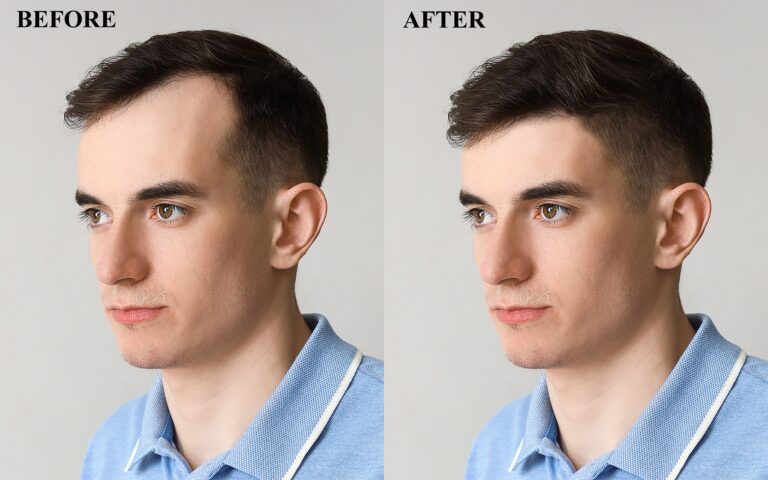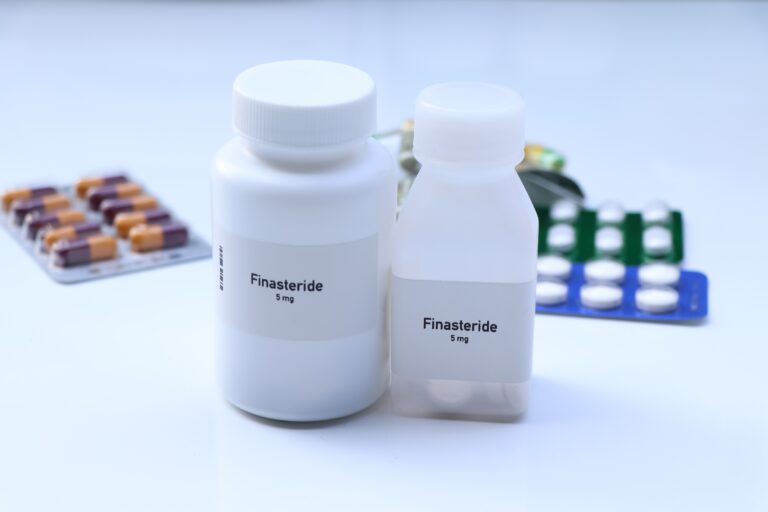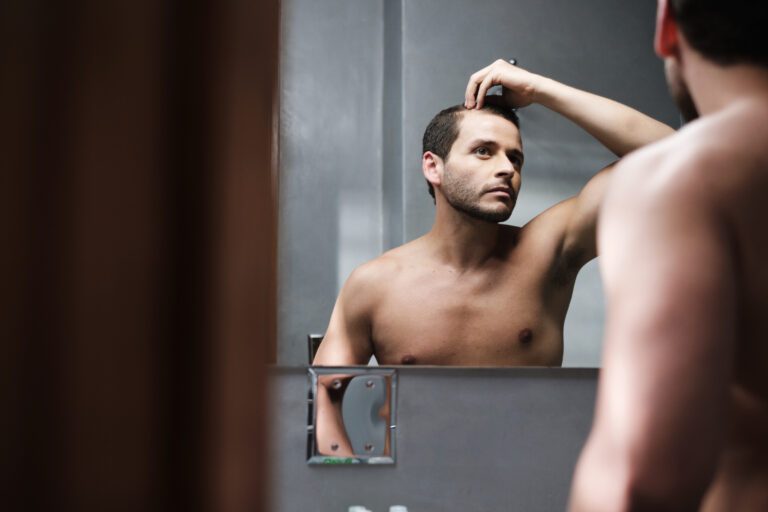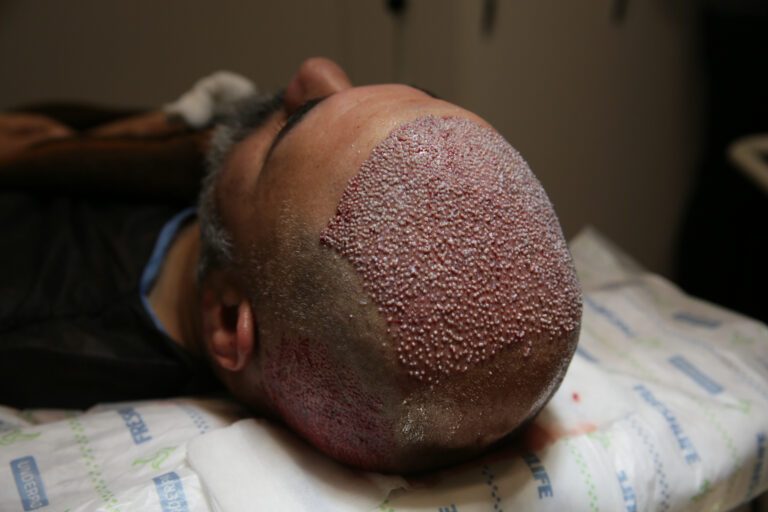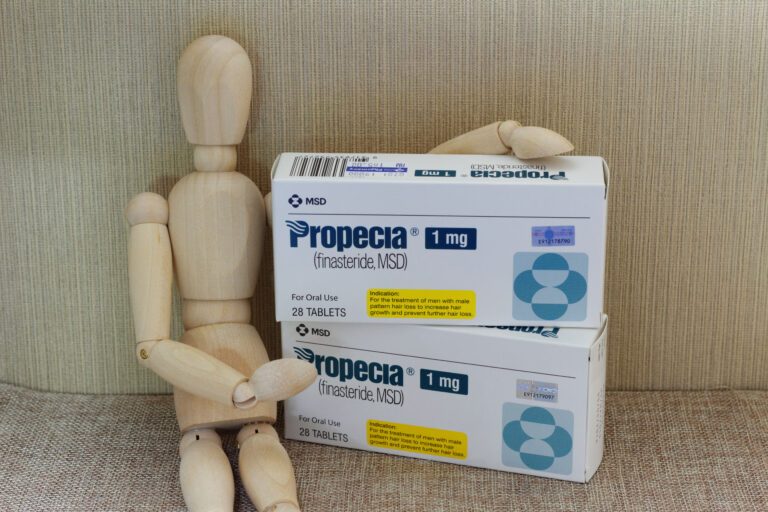What Are The Best Alternatives To Finasteride For Hair Loss?
Finasteride is one of the most effective hair loss treatments on the market. However, in some cases, this medication causes intolerable side effects.
It can negatively affect sexual health. It may also lead to depression as it reduces the dopamine the body releases.
For those reasons and others, many people look for alternatives to finasteride.
Luckily, today’s hair loss solutions market offers a plethora of finasteride alternatives you can pick from. Still, each one has its positives and negatives that you need to consider.
This post will give you all you need to know about finasteride substitutes. More importantly, we’ll help you to choose between the different options.
What Are the Alternative Drugs and Medical Procedures to Finasteride?
There are many medical solutions to the problem of hair loss. However, only a few have the same or more efficacy as finasteride.
Here are the best seven Propecia alternatives:
- Hair Transplant
A hair transplant is one of the most effective alternatives to finasteride. It’s also considered one of the top hair loss solutions overall.
In this surgical procedure, surgeons extract hair from dense scalp areas and transplant them in bald spots.
While finasteride slows down the process of hair loss, transplant procedures restore and regrow hair in the thinning areas.
Even better, a hair transplant is the only effective option in restoring completely balding areas or headlines.
Given that, the success of the surgery depends significantly on the surgeon’s experience and skills. So, you need to choose them carefully.
It’s worth mentioning that a hair transplant will only address hair loss in the areas that have been transplanted. However, it won’t prevent future hair loss from other spots that are prone to it.
Therefore, in some cases, doctors recommend using other medications, such as minoxidil, after hair transplant surgeries.
This is to maintain the growth of the new hair and prevent any potential hair fall in the other areas.
Pros
- Provides long-term results
- Gives a more natural look as the surgeon controls which area to receive the new hair
- Require low maintenance by the time the transplanted hair starts to grow permanently
Cons
- Reduces hair in the donor areas
- Requires a recovery time of a few days
- PRP Treatment
Platelet-rich plasma can be the ideal alternative to finasteride for hair loss. This solution has been around for only two decades. Though, now, it’s widely used in dermatology clinics.
Studies have shown the effectiveness of PRP in increasing hair density and preventing hair loss. In addition, this method is FDA-approved for treating thinning hair.
To use platelet-rich-plasma to treat hair loss, the doctor does the following:
- Draws a small amount of blood from the patient
- Processes the blood to separate the platelets
- Injects the processed blood into the patient’s scalp
One downside of PRP is that it requires frequent visits to the doctor. This is because it has to be applied by an expert dermatologist.
Pros
- Cause minimal to no side effects
- FDA-approved for treating hair loss
- Sessions don’t usually take much time,30 minutes or less
Cons
- Can be costly as you may need several sessions per month
- Low-Level Laser Therapy
Laser therapy is a highly reliable method to promote hair growth. This therapy as a treatment for hair loss was invented in the 1960s.
Since then, researchers have conducted a lot of studies to assess its effectiveness in addressing hair thinning and loss.
Low-laser therapy was approved for male pattern balding treatment in the past decade,
Today, you can find laser therapy in most dermatologist clinics as one of the options for treating hair loss.
In a study in 2018, androgenetic alopecia treatment with laser showed an increase in hair density and diameter for men and women.
Another study has shown that using laser therapy in men led to a 39% increase in hair count in only four months.
Given that, to get satisfying results from laser therapy, you need to undergo multiple sessions each week for a few months.
Pros
- Rarely result in side effects
- Can increase hair strength
- The process causes no pain
Cons
- Time-consuming as you need to visit the clinic often
- Laser Caps
Laser caps provide you with low-laser therapy in the comfort of your home without the need to visit a clinic.
These small wearables offer the same laser therapy as the clinic but with less intensity. The cap contains a wide array of laser diodes directed toward the scalp to stimulate it.
These devices work on strengthening cells in the scalp responsible for hair growth which improves hair growth. As a result, they help promote hair growth and prevent hair thinning and loss.
Most of these caps are used for only half an hour a day or less. You’ll start seeing results within 6 and 12 months.
Pros
- Easy-to-use wearables
- Shows no side effect
- Convenient and can be used while doing other activities
Cons
- The results vary hugely from one person to another
- Dutasteride
Dutasteride is a medication that works similarly to finasteride. It blocks the process of converting testosterone into DHT in the body. This process is one of the main causes of hair loss.
Some studies showed dutasteride is even more effective than finasteride in treating hair loss in men.
This is because dutasteride can inhibit a higher percentage of DHT than finasteride.
Because dutasteride works the same way as finasteride, both medications have the same side effects, from sexual dysfunction to breast tissue growth.
So, if your goal in substituting finasteride is to avoid its adverse effects, this drug isn’t your best option.
Pros
- More effective than finasteride in treating hair loss
- Have been achieving results for a vast number of people for years
- Widely available
Cons
- Has the same side effects as finasteride
- Not FDA-approved for hair loss treatment
- Minoxidil
Minoxidil is one of the most popular treatments for hair loss. This popularity is due to its exceptional results in treating thinning hair and promoting hair growth.
Minoxidil has been tested for many years and has proven its efficacy. It works by boosting the blood flow to the scalp to stimulate hair growth.
A German study found that 62% of men who used 5% minoxidil for a year showed a significant reduction in hair loss.
In addition, minoxidil gives positive results for 2 out of 3 people who use it. This is a high success rate for a hair loss treatment.
More importantly, this medication is FDA-approved and doesn’t cause the side effects of finasteride.
It comes in one of three forms:
- Oral pills
- Topical foam
- Tropical liquid
However, it’s worth mentioning that finasteride is twice as effective as minoxidil in the treatment of androgenic alopecia. In addition, minoxidil can cause skin irritation for some people.
Pros
- Many studies over the years have proven its effectiveness
- Widely available
- Shows mild or no side effects
Cons
- Requires a high commitment as you need to use it twice a day for an extended period
- Prostaglandin
Prostaglandin is a natural molecule the adipose tissues in our bodies release. The molecule has a biological function related to healthy hair growth.
Doctors have been using prostaglandin as a hair loss solution recently. Manufacturers extract and sell it in an injection form that physicians can inject into the scalp.
Injecting this molecule into the scalp boosts your body’s ability to produce it naturally.
A study showed that this molecule accelerated the regeneration of hair follicles. This process considerably affects the speed of hair growth.
Recent research found that this substance stimulates hair growth by improving hair follicle stem cells.
Pros
- Multiple studies showed its effectiveness
- Widely available
- All-natural molecule
Cons
- Needs to be injected by a professional, so you’ll need to visit the clinic frequently
What Are the Natural Alternatives to Finasteride?
Besides all the surgical procedures and medication, some natural supplements can be highly effective in treating hair loss.
Among all the available options in the market, here are the four most noteworthy finasteride natural alternatives
- Saw Palmetto
Saw palmetto is a natural plant-based extract that works slightly like finasteride. It improves hair growth and thickness by blocking 5-Alpha reductase.
Still, it’s a natural herb that doesn’t come with the side effects of finasteride. It only has some rare mild side effects like headache and dizziness.
Because the discovery of saw palmetto as a hair loss treatment is relatively new, research on its effectiveness is still limited.
Though, one study found that men who used a combination of saw palmetto and Trichogen veg complex showed positive results in their hair growth.
They experienced an increase in hair count by 11% within four months.
Pros
- Rarely shows side effects
- Widely available, you can buy from most supplement stores
- Natural plant-based treatment
Cons
- Might interact with clotting blood medications
- Viviscal
Viviscal is a hair supplement whose manufacturer claims to improve the hair’s thickness and promote new hair growth.
This supplement contains some natural extracts and a few essential vitamins. All its ingredients are known for supporting hair health, like zinc, iron, and biotin,
A 180-day study found that using Viviscal supplements resulted in considerable hair growth in women.
The same study also found that the supplement is highly safe and doesn’t cause any adverse effects.
In addition, some hair experts describe the supplement as helpful in case of hair loss. Others say that it needs more studies to prove its effectiveness.
It’s worth mentioning that you should avoid Viviscal if you suffer from a shellfish allergy, as it contains mollusk powder.
Pros
- All its ingredients are beneficial micronutrients that support overall health
- Shows no adverse effect
- Its users report a lot of positive feedback
Cons
- Not FDA-approved, as it’s a supplement, not a drug
- Ecklonia cava
Ecklonia cava extract is another natural alternative to finasteride. It’s a brown seaweed that is extracted mainly in Japan and Korea.
Research shows that this substance considerably promotes hair growth. To get this extract’s benefits, you can apply it directly to your scalp or add it to your homemade shampoo.
You can easily get it from health food or supplement stores. It’s also widely available online.
Pros
- Have no side effects
- Contains a high level of antioxidants that promotes the overall health
- Easy-to-use
Cons
- Some brands provide poor-quality products
- Procapil
Procapil is a natural formula of various ingredients that reduces hair loss and promotes growth.
This formula works by minimizing the effect of the DHT hormone, which is responsible for hair loss. Procapil comes in oral and topical forms.
Studies on this hair loss treatment are still limited. However, available research found that patients who used it showed a decent satisfaction rate.
Pros
- Come in two forms
- Shows good satisfaction rate
Cons
- The research on it is limited
What to Consider When Picking One of the Finasteride Alternatives?
There are three significant considerations you need to keep in mind when choosing any option from the provided list:
- They aren’t a one-time treatment. Most require regular use for an extended period.
- All the alternatives on the list have studies that support their effectiveness.
- A few of the options on the list have side effects. So, you need to check these adverse effects first before selecting any option.
- Some options on the list can interact with other medications and cause health issues. That way, you need to consult your doctor first.
Conclusion
There are many alternatives to finasteride. Each has some differences.
On top of Propecia alternatives is hair transplant surgeries, which provide long-lasting results. Plasma treatment is also a reliable hair loss solution.
Treatment with low-laser therapy is another excellent alternative, whether in a clinic or by using laser caps.
Medications such as dutasteride and minoxidil are solutions to count on when curing thinning hair. They offer highly similar results to those of finasteride.
In addition, the natural molecule: Prostaglandin is an ideal option to speed up your hair growth.
Moreover, natural finasteride alternatives, like saw palmetto, Viviscal, and Ecklonia cava, provide excellent results with minimal side effects. So, they may be a perfect choice.


